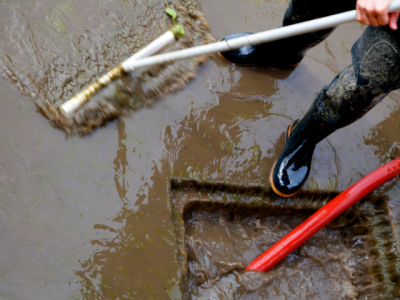
TO: Vermont Municipal Officials
FROM: Kim Canarecci, Vermont State Public Assistance Officer (802-585-4209, kim.canarecci@vermont.gov)
FULL TEXT OF EMAIL SENT 7/18/2024, 5:54 PM (Note: Formatting adjustments were made to help municipalities find information quickly.)
Good evening, Towns -
As you continue recovery efforts, I wanted to remind you to track volunteers that assist the Town with damage recovery efforts on town-owned infrastructure. Volunteers assisting homeowners are not included in FEMA Public Assistance.
Using Volunteer Assistance for Municipal Recovery Work
If we receive a federal disaster declaration, towns will be able to submit their damage costs into FEMA (Federal Emergency Management Agency) for funding. A donated resources project may be written to help offset the non-federal cost share of Town eligible projects. Donated resources can include volunteer labor, supplies and equipment, buildings or land, and space or logistical support. Federal share of projects is typically 75% and the remaining 25% is Town/State share depending on your Town's ERAF percentage.
When tracking your town volunteers you must have the volunteer's full name, contact information, date and hours worked as well as the location documented. See donated resource form to help you track. (Do not worry about the $ labor rate as that is determined by National Rate.) Donations of equipment and materials should also be tracked such as tractors, chainsaws, gravel, and supplies.
Donated Resources projects (CAT B) offset the non-federal share total of a town's total Category A (debris work) or their Category B (emergency work) project cost, not Category C (roads).
Donated projects are a “calculation” to offset the non-federal share and are not a full fixed number paid to the town.
For example: If the Town of Washington had a total of $100,000 in Donated Resources in a project and they also have debris project where the town's cost was $20,000 of non-fed share costs, the donated total would be used to wipe out the town's owed cost of $20K, and the $80K goes away.
Or if the Town of Washington had $20k of donated resources and had $50k of non-fed share costs, this $20k would bring the towns out of pocket cost on the project down to $30k.
It is important to note that the work must be for the Town, a.k.a., sandbagging around the town office, mucking town property, directing traffic away form a flooded street, etc. If they were volunteering to clean out private homes, that time is not eligible.
Documentation Requirements
All volunteer hours, equipment, and materials must be documented.
The following information must be included:
- Hours – Volunteer’s full name, date, hours worked, location, and detailed description of work performed (e.g. removing debris, serving food at a shelter, donating water or ice, etc.)
- Equipment – Type of equipment (to include size, capacity, horsepower, and make and model as applicable), operator’s name, date, hours, and miles (if applicable). The equipment time must match to an operator, location of work performed, and time worked.
- Materials – Vendor, description of material, usage of material, quantity, price, and date received.
Eligible Activities
- Removing eligible debris for public property.
- Filling and placing sandbags.
- Donating equipment to raise or reinforce a levee.
- Donated equipment to clear the city or county’s right of way debris from their roads would be eligible.
- Donated chainsaws used to cut a fallen tree blocking a public hospital’s driveway would be eligible.
- Donating materials, such as rocks and sand.
- Search and rescue when part of an organized search and rescue operation.
- Professional safety inspections.
Ineligible Activities
- Debris removal on private property. Private Property Debris Removal (PPDR) is eligible only if PPDR has been approved by the Federal Coordinating Officer for the disaster in the designated area. Therefore, donated resources for PPDR is eligible only if PPDR has been approved for the disaster.
- Feeding volunteers that are doing ineligible work, i.e., volunteers doing private property debris removal when it hasn’t been approved for PA.
- Volunteer firefighters working within their own jurisdiction.
- Emergency repairs to private property.
- Unapproved donation warehouse activities.
Stay safe,
Resources
FEMA Public Assistance and Donated Resources Criteria
Emergency Protection Measures and Donated Resources Presentation
FEMA Schedule of Equipment Rates (effective beginning July 26, 2023; use for July 2024 flood)